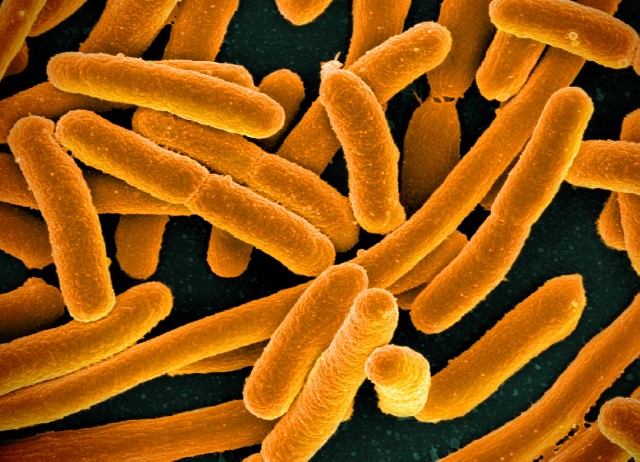Bacterial resistance to antibiotics is a worldwide health concern because once easily curable infections are becoming more challenging to treat. Many bacteria, such as Escherichia coli, can produce resilient forms with additional survival mechanisms. For example, they can form mat-like shields, called biofilms, to keep themselves safe. Or they can move as a group, known as swarming, to find new resources. Researchers have studied antibiotic-resistant bacteria but they haven’t studied how nutrients influence protective bacterial behavior over generations, referred to as multigenerational memory.
Researchers from the University of Texas recently tested whether iron in the environment contributes to multigenerational memory in bacteria. Iron is a key nutrient for bacteria, just as it is for humans, helping them carry out life processes like metabolizing and respiring. However, the amount of iron bacteria can access varies greatly depending on environmental conditions. If there’s too little iron, bacteria cannot thrive. In the case of E. coli, different iron levels can change how they behave.
The researchers created 2 groups of E. coli. They gave the first group low enough iron levels to inhibit their growth. They gave the other group 1,000 times more iron, making it quite abundant. Then, they stripped away the nutrients from both groups of bacteria and raised their temperatures high enough to cause them stress, to see how their behavior changed.
They found that the bacteria tended towards different defense behaviors depending on their iron levels. Bacteria with less iron tended to swarm more frequently, while bacteria with more iron formed biofilms more frequently. Iron levels also affected the bacteria’s ability to form biofilms, since bacteria with excess iron formed biofilms that shielded them better. However, they also found that bacteria given less iron became hardier and fared better against follow-up exposure to 2 antibiotics, kanamycin and chloramphenicol.
The scientists observed 5 generations of E. coli in each group to see if this behavior continued. They found that bacteria passed on their preference to swarm or form biofilms for up to 4 generations, meaning they remembered their ancestors’ iron levels. However, this iron memory, as the researchers called it, disappeared by the 5th generation. Based on these results, the researchers concluded that bacterial colonies can pass on information about their environment, but only briefly.
The researchers also discovered that bacterial memory itself was connected with iron levels. By observing the bacteria’s behavioral and genetic changes, they identified 2 proteins that controlled the amount of iron the bacteria absorbed, named FepA and Fur. They observed that when low iron levels caused these proteins to work harder all bacteria affected tended to swarm. They interpreted this result to indicate that iron levels leave lasting physical changes on bacteria which then influence the bacteria’s memory of their environment, leading to a change in behavior.
The researchers also proposed their findings could help scientists improve antibiotics. They explained that antibiotics create harmful chemicals that damage bacterial cells, called reactive oxygen species or ROS. They found that high iron levels in the environment encouraged this production of ROS. So, bacteria with low iron levels survived treatment better as the antibiotics produced fewer ROS. They suggested this finding demonstrated that lower iron levels also assist bacteria in responding to antibiotics as they acclimate faster to environmental stress.
According to the researchers, learning how bacteria use iron memory can help scientists fight antibiotic resistance through multigenerational adaptation. Bacteria that can remember previous antibiotic exposure will be much tougher to kill, making antibiotic resistance a continuing concern. The researchers concluded that breaking such bacterial memories could give antibiotics an advantage in the future. Still, they conceded that further research is required to determine the limitations of this mechanism and if it works in other bacteria.


